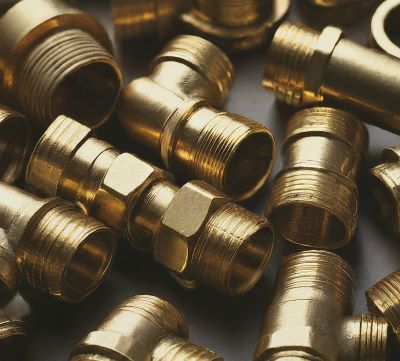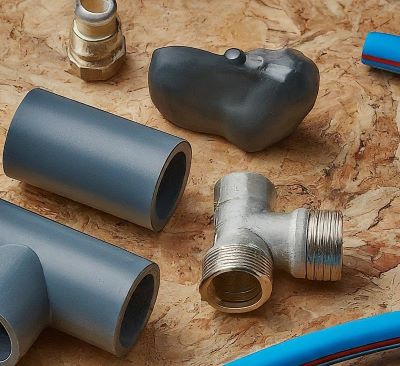The rise of PEX plumbing systems has brought with it a new debate: brass vs plastic PEX fittings. Both options have their merits, and the “right” choice depends on your specific project.
Let’s delve into the strengths and weaknesses of each material to help you make an informed decision.
Brass PEX Fittings: The Reliable Veteran
Brass fittings have been the workhorse of plumbing for generations, and for good reason. They are renowned for their:
➡️ Durability and Strength: Brass can withstand high water pressure and resist impact, making it a reliable choice for long-term use.
➡️ Larger Flow Diameter: In some high-flow applications like hot water lines feeding multiple fixtures, the slightly larger diameter of brass fittings can be beneficial.
➡️ Favorability Among Some Plumbers: Due to their familiarity and perceived reliability, some plumbers might be more comfortable working with brass.
However, brass isn’t without its drawbacks:
➡️ Cost: Brass fittings are significantly more expensive than their plastic counterparts.
➡️ Susceptibility to Corrosion: In areas with acidic or hard water, brass is susceptible to dezincification, a type of corrosion that can weaken the fitting.
➡️ Heavier Weight: Brass fittings are heavier than plastic, making them more cumbersome to handle during installation and potentially requiring additional support.
Plastic PEX Fittings: The Modern Challenger
Plastic PEX fittings have emerged as a strong contender in the PEX world, offering several advantages:
➡️ Cost-Effectiveness: Plastic fittings are a much more budget-friendly option compared to brass, making PEX systems more affordable.
➡️ Lightweight Champion: The lighter weight of plastic makes them easier to handle during installation, reducing strain and fatigue for plumbers.
➡️ Superior Corrosion Resistance: Unlike brass, plastic is not susceptible to corrosion, making it a great choice for areas with various water conditions.
However, plastic does have some limitations to consider:
➡️ Slightly Smaller Flow Diameter: Plastic fittings might have a slightly smaller flow diameter than brass. But don’t worry, this minimal difference has negligible impact in most household applications.
➡️ Strength Perception: While generally strong, plastic might be perceived as less robust than brass. In rare cases, additional support might be needed for specific applications.
➡️ Newer Material: Some people might be hesitant about plastic due to its shorter history in plumbing compared to brass.
Choosing the Right Fit: It’s All About Your Needs
The best material for your project depends on your specific requirements. Here are some important things to think about:
➡️ Cost: If budget is a primary concern, plastic offers significant savings.
➡️ Fluid Quality: If you have harsh water conditions, plastic’s superior corrosion resistance makes it ideal.
➡️ Application Demands: For high-pressure systems, brass might be preferred by some plumbers for its strength. However, flow rate rarely necessitates brass in typical homes.
➡️ Plumber’s Expertise: Respect your plumber’s experience and comfort level with each material, but feel empowered to ask questions and discuss your priorities.
Don’t Be Fooled: There’s No One-Size-Fits-All Answer
There’s no single “better” option. Here are some scenarios where each material might shine:
➡️ High-Pressure Applications with Experienced Plumbers: If you have a high-pressure system and a plumber experienced with brass, it might be a good choice for peace of mind.
➡️ Budget-Conscious Remodel with Good Fluid Quality: For a budget-friendly remodel with good water quality, plastic fittings offer a cost-effective and corrosion-resistant solution.
Additional Considerations: Beyond Material
While material is a crucial factor, there are a couple of other things to keep in mind:
➡️ Building Codes and Regulations: Some areas might have specific regulations regarding fitting materials. Check with your local building department if unsure.
➡️ Product Availability: Supply chain limitations could impact the availability of certain materials in your region.
Making an Informed Decision: Your PEX Plumbing Awaits
Both brass and plastic PEX fittings have their strengths and weaknesses. By understanding your project requirements and considering the factors mentioned above, you can make an informed decision that ensures a successful and durable PEX plumbing system.
Remember, the best choice is the one that best fits your specific needs and budget. Now, go forth and conquer your PEX project!
Post time: Jun-27-2024



